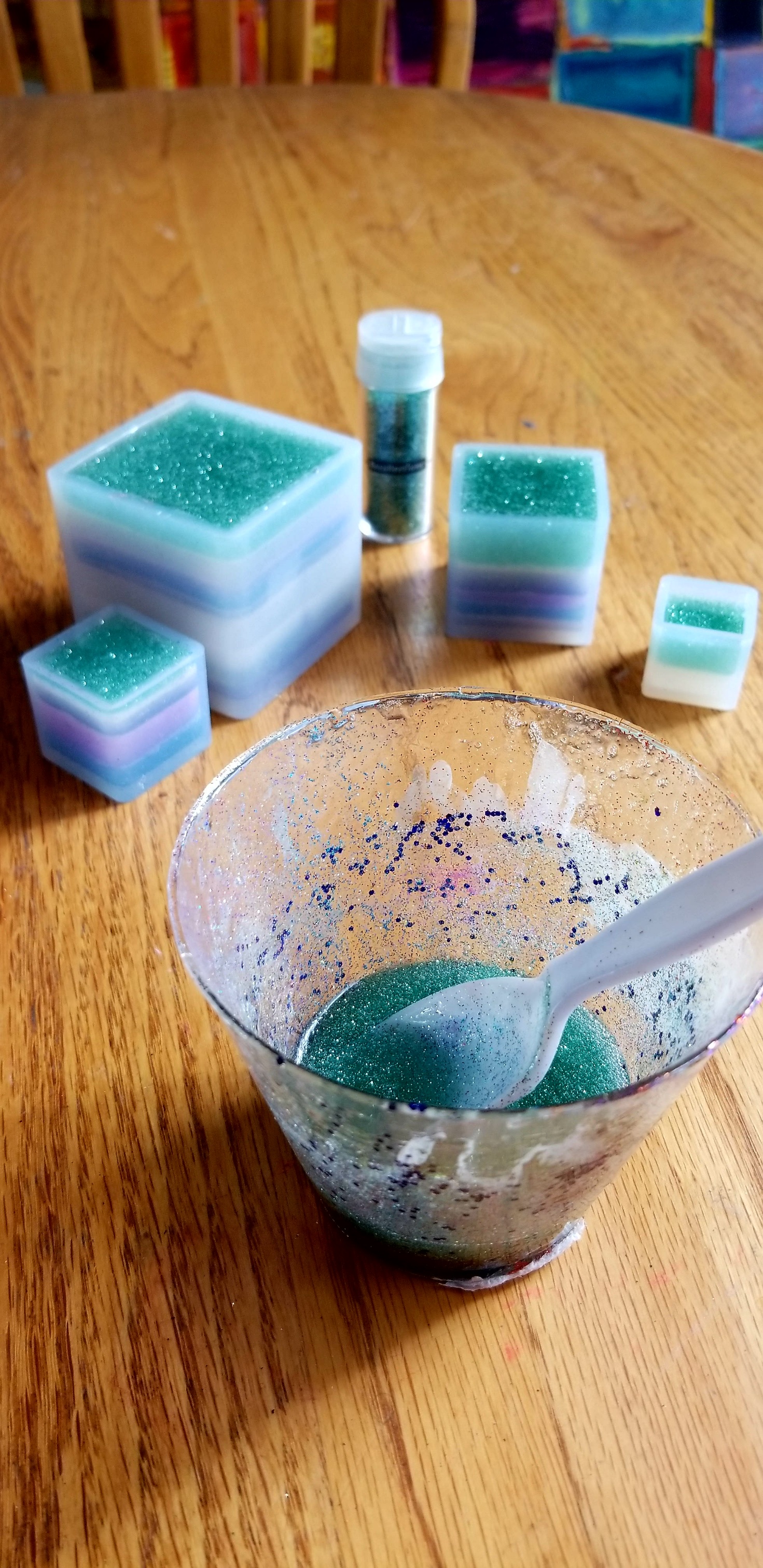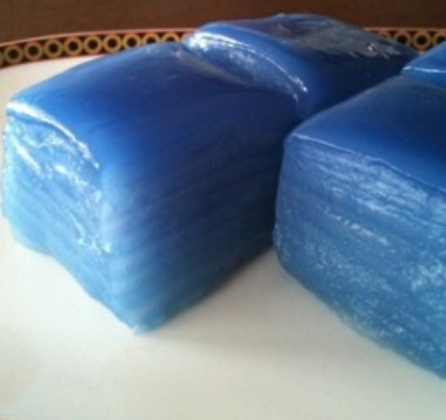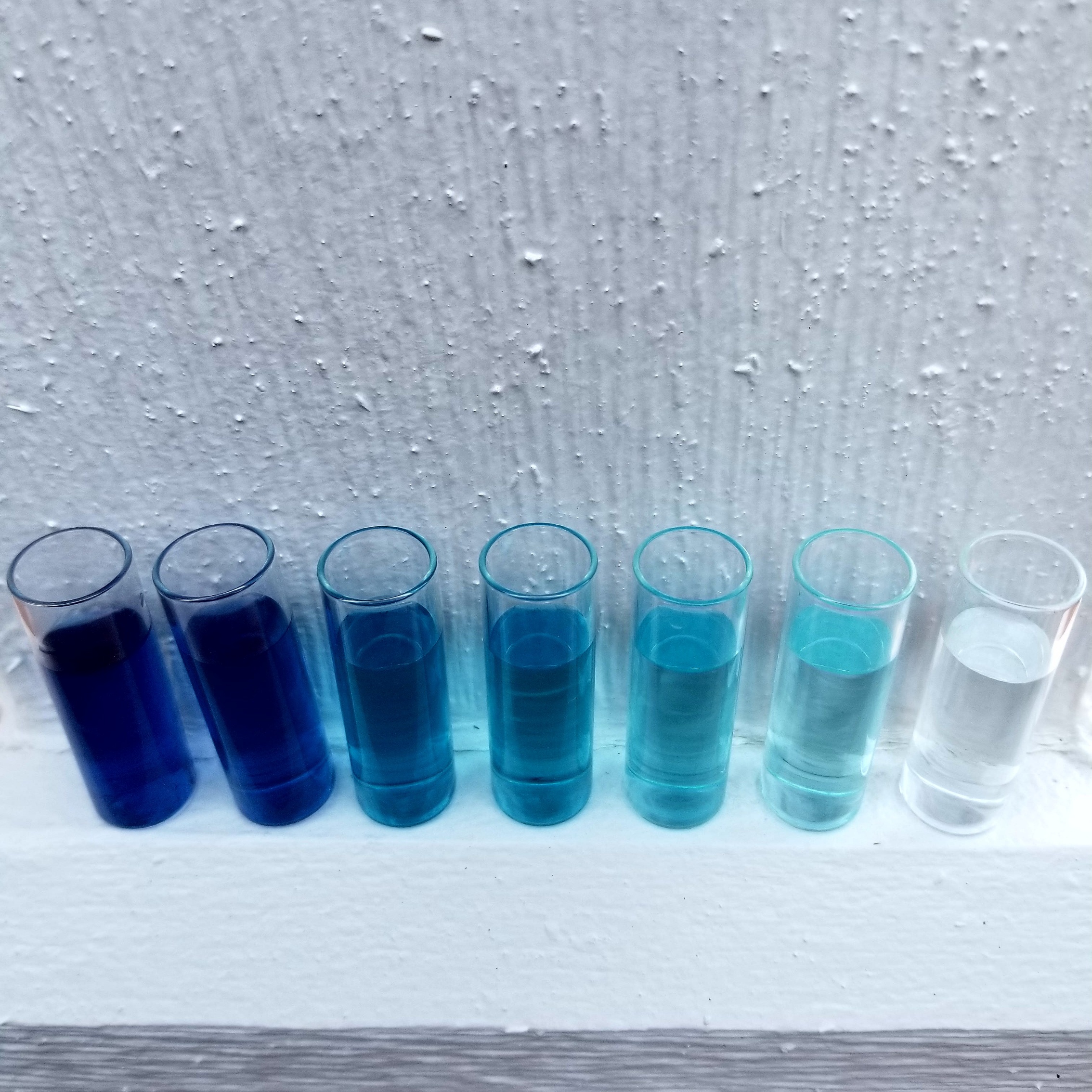Red rose petals are an organic way to create dusty pink and blush hues for your textile and craft projects. No roses in your garden, no problem! Recycling & repurposing a bouquet with roses is an amazing way to enjoy the beauty of flowers long after they have faded. This tutorial will show you how to brew color from wilting red roses, as well as how to dye paper & the resulting color swatch samples (wet strength tissue paper) with various pre-mordants.
Immersion-Dyed Roses
Faded rose petals are the perfect flower to create reds & pinks with an immersion dyeing technique for your textiles. Recycling & repurposing a bouquet of roses, or straight from your summer garden, is an amazing way to enjoy the beauty of flowers long after they have faded. This tutorial will show you how to immersion dye with rose petals on cotton using white vinegar & iron water to modify the colors.
Steam-Dyed Tulips
Tulip petals are a wonderful flower to create reds & pinks with a steam dyeing technique for your textiles, aka eco-dyeing. Recycling & repurposing a bouquet of tulips, or straight from your spring garden, is an amazing way to enjoy the beauty of flowers long after they have faded. This tutorial will show you how to steam dye with tulip petals on silk using white vinegar & iron water to modify the colors.
Dahlia Dye
Dahlia flowers are a natural way to create golden yellow hues for your textile and craft projects. If it's not the season for dahlias, no problem! Recycling & repurposing a bouquet with dahlias is an amazing way to enjoy the beauty of flowers long after they have faded. You could say it's twice as nice! This tutorial will show you how to brew dyes from wilting dahlia flowers, as well as the resulting color swatch samples (cotton & silk) with various pre-mordants.
Blue Spruce Dye
Do you have blue spruce in your neighborhood? If so, grab yourself a few boughs and chop them up in your dye pot! By adding iron water to your brew, you can coax out the bluish tint from this evergreen to create gorgeous cool grays. This tutorial will show you how to identify & brew dye from a blue spruce, shift color with iron water and the resulting color swatch samples (cotton, bamboo & silk) with various mordants.
Pine & Spruce Branch Dye
Picking up downed evergreen branches of pine & spruce trees not only cleans up your yard, but can be repurposed into some beautiful colors in your dye pot. The natural tannin in the branches will give you a beige color on textile, but with the addition of all-in-one mordant of alum & iron water, you can achieve olive greens and rich browns as well. This tutorial will show you how to brew dye from foraged pine & spruce branches and expand your palette with an all-in-one mordant technique, plus the resulting color swatch samples (cotton & silk).
Birch Bark Dye
Join me on a foraging trip (Part 2) in the beautiful mountains of Central Idaho to search for color from birch trees. Learn to identify and differentiate birch from aspen and how to ethically collect birch bark for your dye pot. The natural tannins in bark bond wonderfully with textile and create a range of beige and tan colors. After exploring the landscape of the Big Wood River in search of birch, this tutorial will show you how to brew dye with the resulting color swatch samples (cotton & silk) with various mordants. As an added bonus, you will learn how to create an all-in-one mordant within the dye itself to expand your color palette.
Pine & Spruce Cone Dye
Join me on a foraging trip (Part 1) in the beautiful mountains of Central Idaho to search for color from conifer trees. Learn to identify pine and spruce cones and how to ethically collect them for your dye pot. The tannins in cones bond wonderfully with textile and create a range of beige colors with orange and pink hues. After exploring the landscape of the Sawtooth and Boulder mountains in search of cones, this tutorial will show you how to brew dye with the resulting color swatch samples (cotton & silk) with various mordants.
Noble Fir Dye
If you love having fresh evergreen in your home for holiday decorations, keep that aroma brewing by recycling the boughs in your dye pot - needles and all! The natural tannin in the branches will give you a beige color on textile, but with an iron water shift, you can achieve deep grays as well. This tutorial will show you how to brew dye from a noble fir Christmas tree and shift color with iron water, plus the resulting color swatch samples (cotton, bamboo, linen & silk) with various mordants.
Cranberry Dye
Cranberries are a seasonal fruit that are delicious in sauce, drinks AND your dye pot! Simply simmering these vibrant berries will create a gorgeous pink color to use in your textile projects at the holidays and beyond. This tutorial will show you how to brew dye from cranberries with the resulting color swatch samples (cotton & silk) with various mordants.
Pomegranate Skin Dye & Mordant
Pomegranate seeds are a holiday treat, but don't throw away those skins! The peel is full of tannin and is a great way to pretreat your textiles, especially plant (cellulose) fibers like cotton, linen, bamboo and hemp, to create stronger color bonds with natural dyes. The 'mordant' process is an extra, but important, step to help organic color last longer and protect it from fading with exposure to light and wash. The process is as easy as simmering a pot of a water and soaking your textile for an hour. And, if you love yellow, pomegranate skins make a rich golden dye with a longer soak and some extra peels. This video tutorial will show you how to tannin mordant cellulose fibers with the skins, as well as create a long-lasting yellow color for your textiles.
Black Walnut Dye
If you are lucky enough to have a black walnut tree in your midst, you can add rich browns to your dye pot in autumn. After the hulls fall from the tree, forage them while green, or even collect them after they turn black, to create a tannin rich dye to use for coloring or a mordant. You can even make extremely dark hues with iron water that are as close to black as you will get in the natural dye world. This tutorial will show you how to brew dye from black walnut hulls on the stove, as well as a cold 'sun' tea dye from the shells. You will see the resulting color swatch samples (cotton & silk) with various mordants and the impact of shifting the color with an iron water bath.
Alum Mordant
Alum is an easy way to pretreat your textiles to create stronger color bonds with natural dyes. The 'mordant' process is an extra, but important, step to help organic color last longer and protect it from fading with exposure to light and wash. Typically found in your grocery spice aisle, alum is a mineral most often used by natural dyers on its own or in combination with other mordants such as tannin. The process is as easy as simmering a pot of a water and soaking your textile for an hour. This video tutorial will show you how to make an alum bath, as well as the use of cream of tartar for protein fibers.
The square root of pie
Creative Blocks
A bat, a moth and a butterfly flit into a bar…
Might seem like a strange visual, but these are the most common images (sans bar!) that people see when they examine the first of Rorschach’s ink blots. Known as Klecks at University, the Swiss artist-turned-psychiatrist developed his love of Klecksography into one of the most widely known psychoanalytical evaluations of our time.
Two Peas, 2018, my first attempt at painting with the organic blue dye of butterfly pea blossoms.
So, here is my question: what is the fascination of finding the reality in abstract art?
As humans, we have an inherent need to understand what we see and connect it to the world around us. The figure, the landscape, the dogs playing poker - we get that and it makes sense. It's exactly why puffy cumulus clouds have a tendency to channel Mickey Mouse.
Seems Mickey Mouse was absent this day. What do you see?
But, when someone says your work reminds her of dried fish swim bladder, what does that say about you, or more importantly, your art?
Mawther Nature's candy
Building and installing abaca sculpture, a fiber made from a native Philippine plant in the banana tree family, has garnered lots of ink blot banter. The swirls have been lovingly compared to Dr. Suess’ fantasy world, Chihuly’s glass work and unicorn horns.
Abaca swirls installed on Black Butte Ranch in Oregon, August 2018.
However, when Cherry, my Thai sister-in-law, feverishly helped me slather adhesive on the abaca to prepare for a festival installation this month, she saw fish maw.
How does a fish float and sink in water? Swim bladder of course!
And you know what? I get it.
Not because the dried seafood delicacy Cherry was forced to eat as a child actually does resemble my abaca swirls. Nope. It’s because, for some reason, the number one recurring connection people make to my artwork is food.
Fish out of water
Merging my love of global travel with art installation, I never imagined I would learn about the foods of distant lands by sticking art in the ground.
Hibiscus infused ice installed on quicksand in Seabrook, Washington, July 2018. Beach ice pops!
Although my sculptures have seen international waters, none of these tasty treats have influenced my work. In fact, some of these morsels and their homelands I’ve never even experienced.
Let’s make a shopping list:
- Borrachitos – the little drunk filled with sweet jelly
- Lokum - the Turkish delight meant for royalty
- Khanom Chan - the nine layer dessert of Thai prosperity
Who says you can’t have dessert first?
Punch Drunk Love
I love everything about Mexican food, but I must admit, I’m not one for the sweets of this scrumptious country. While on Desha Peacock's Sweet Spot Style creative retreat in San Miguel de Allende in January this year, an artist friend, Melissa Partridge surprised me with a gift of borrachitos.
Not a shabby place to create some adhesive domes while on retreat in Mexico. Don't eat the art!
Melissa was not appealing to my sweet tooth. She saw the crystallized jelly cubes and immediately thought of the resin work I was installing in San Miguel.
You might get a little drunk munching on these sweeties in Mexico.
These sugary squares were originally created by nuns to give to their patrons in appreciation for support. Eventually, the sisters found their entrepreneurial spirit and began selling the delicacy to the public.
Glitter infused resin cubes stacked and good enough to eat in San Miguel de Allende, Mexico, January 2018.
Love it! Artisans realizing the value of their work – something we all need to embrace!
The turkey trot
Unlike damar resin, an organic substance drained from trees in East Asia, the resin in my current work is 100% man-made polymer. Nothing you want to gobble down with a tall glass of milk. I would venture to guess eating tape, paper and glue would also not sit well on an empty stomach.
Don't pop this cube in your mouth please!
Not so apparently. The Pop Cubes I’ve created have recently been compared to the wildly sweet Turkish Delight of the spice markets in Istanbul.
Lokum love to share with family and friends.
Although I would not recommend munching on my adhesive treats, the process of making lokum reminds me of the delicate nature of working with resin. The ingredients are simple, but you have to make sure you follow the directions and have everything at your fingertips before you start cooking.
As you can see, I follow the directions perfectly, including the precise measurements and appropriate equipment for handling resin polymer.
Thai spice drops
The kitchen is the heart of the home. It is where we create food to nurture ourselves, body and beyond. We gather around the table to connect, celebrate and commune. Therefore, having my resin cubes compared to khanom chan in Thailand is an honor, and apparently quite lucky.
Glitter infused resin cube at Pacific Beach in Seabrook, Washington, April 2018.
Butterfly pea jelly dessert Thai style.
Making the jump from my sculptures to fodder was not an obvious leap for me. However, if I reflect on the past year of installation, much of my work incorporates organic material and requires the kitchen as my studio.
I mean, isn't the artist's apron borrowed from a chef?
Dough nuts
Organic dyes first entered my practice when I built frozen pieces to install in Iceland. I spent weeks in the kitchen researching dyes derived from plants. Even the elusive blue was found in a magical tea brewed from the blossoms of the butterfly pea.
Nothing more beautiful than a gradient study of blue thanks to butterfly pea blossoms.
Planning my installation trip to Maui in June, the stove-top became my drafting table once again. In a stretch to move from cubes to a spherical form, I opted for an easy solution – dough. Funny enough, it was actually edible art!
Organic dough is more salty than sweet - beware.
Placing organic dough on the beaches of Hawaii elicited a kid-in-a-candy-store list from spectators:
- Skittles
- Pop Rocks
- Nerds
- Sprinkles
- Fruity Pebbles
- Easter eggs
- Potatoes (ok – this one isn’t very sugary, but sweet in thought)
A little sand never hurt. Organic dough on Hamoa Beach, Maui, June 2018.
Connecting my art to the confections of Mexico, Turkey and Thailand fits my Bohemian soul. That said, I love that my organic work has crossed into the mass-media influenced candy industry of the United States.
Andy Warhol was definitely on to something.
Pop psychology
I’d like to think that Rorschach would be proud to know he had reached cultural iconic fame with his ink blot artwork. Being immortalized by Andy Warhol in the art world is no small honor.
Rorschach by Andy Warhol, 1984.
Interestingly, the ink blot was eventually used to test for creative thinking.
When I look, I don’t see a butterfly or a delicious dessert. My ink blot always looks like an island I need to visit one day.
So, tell me, Artist, what do you see in your life's ink blot? I promise not to analyze anything you might say in the comments below...
















